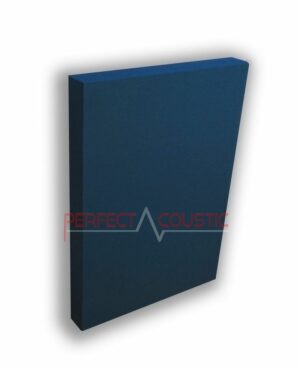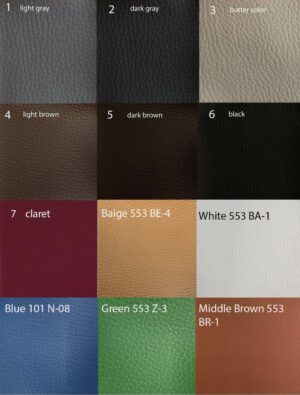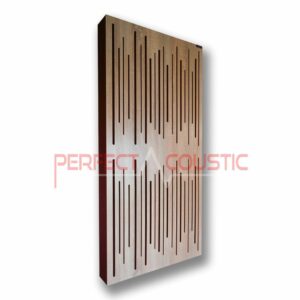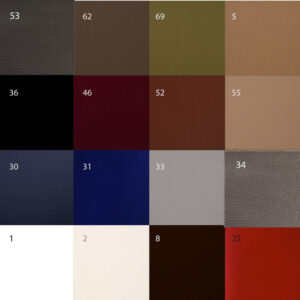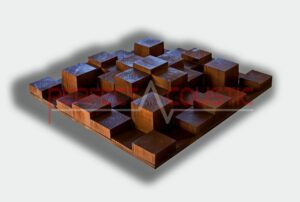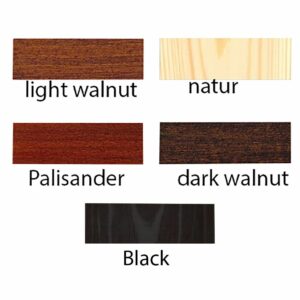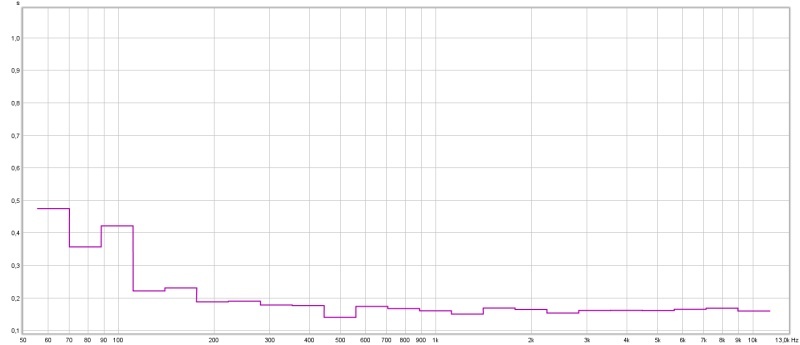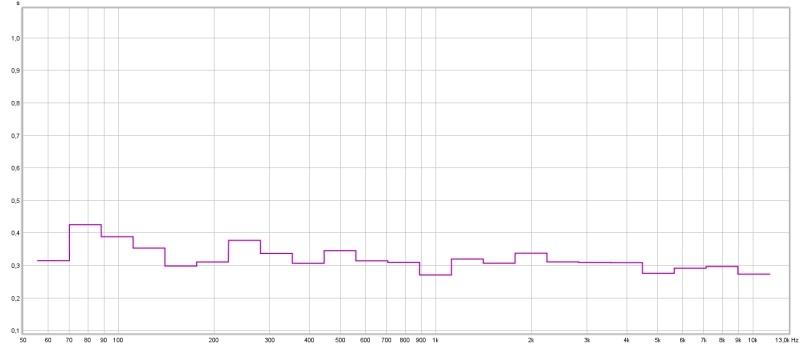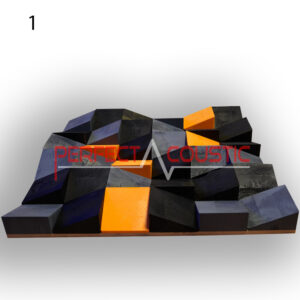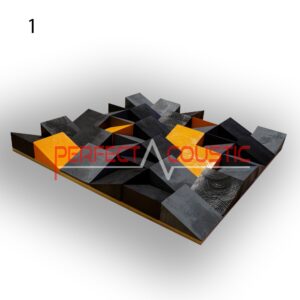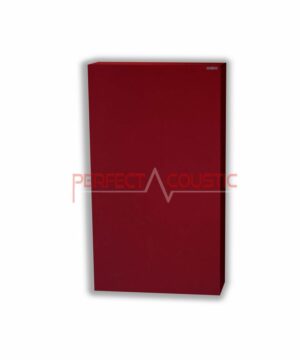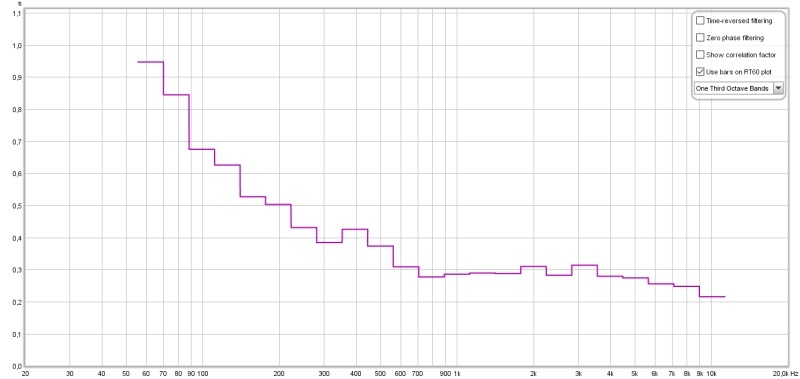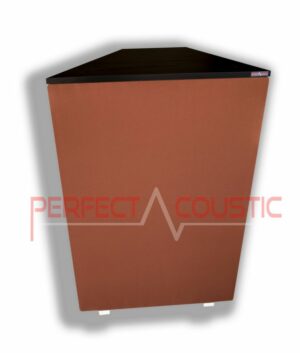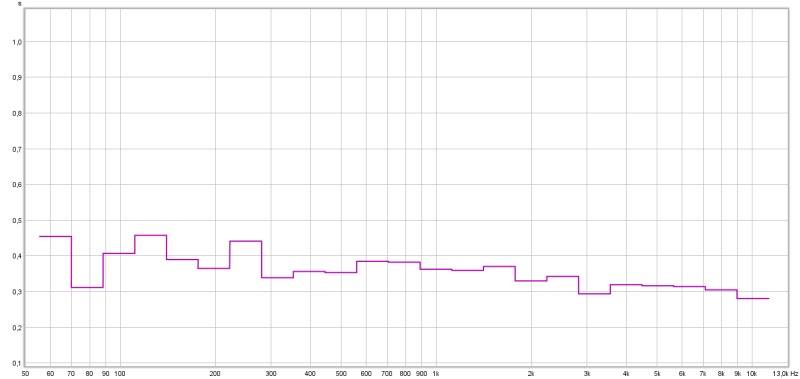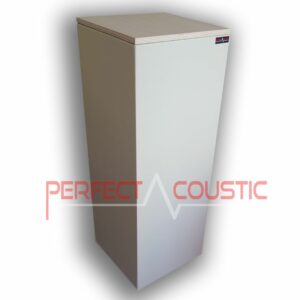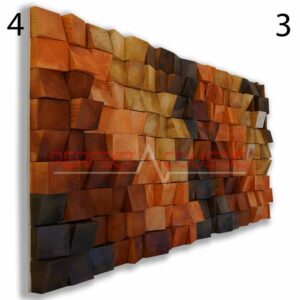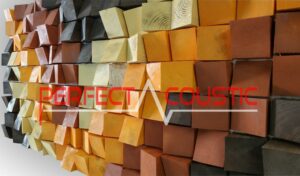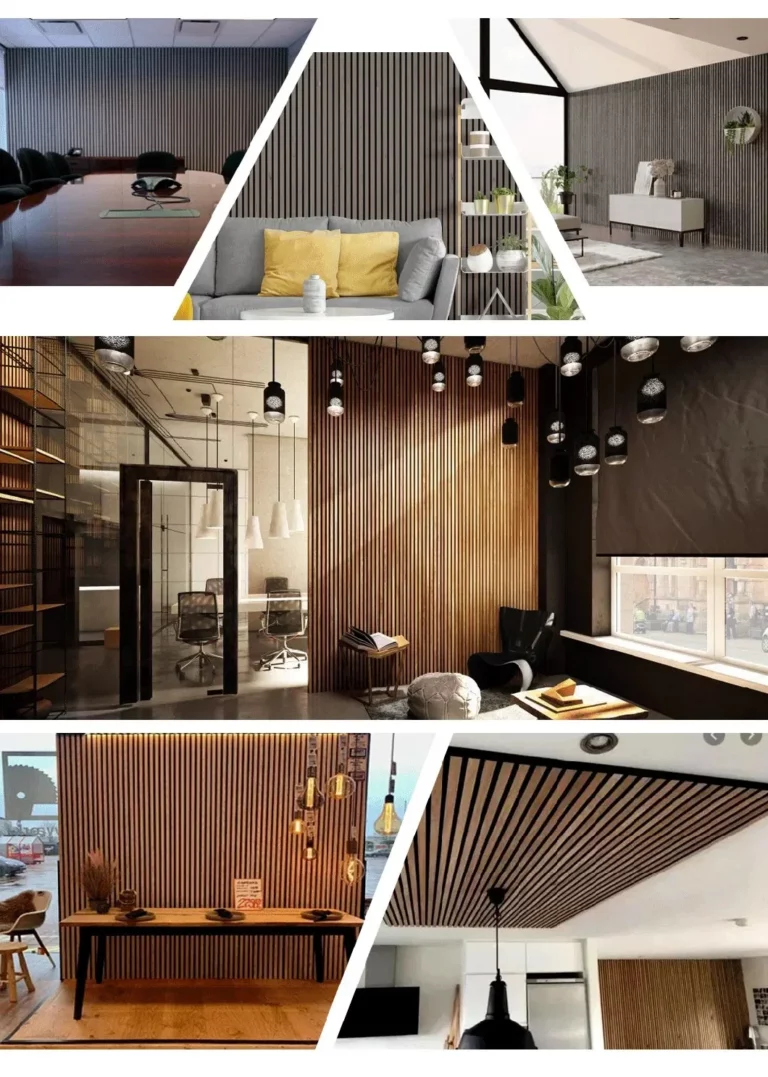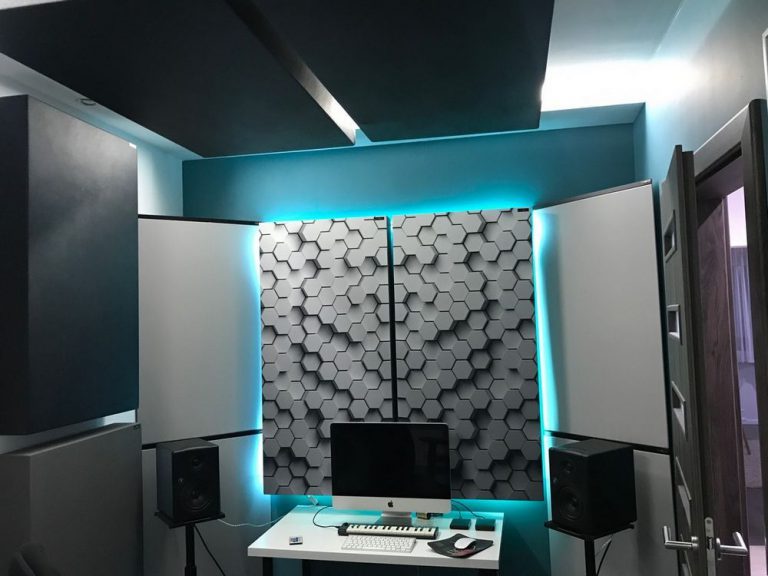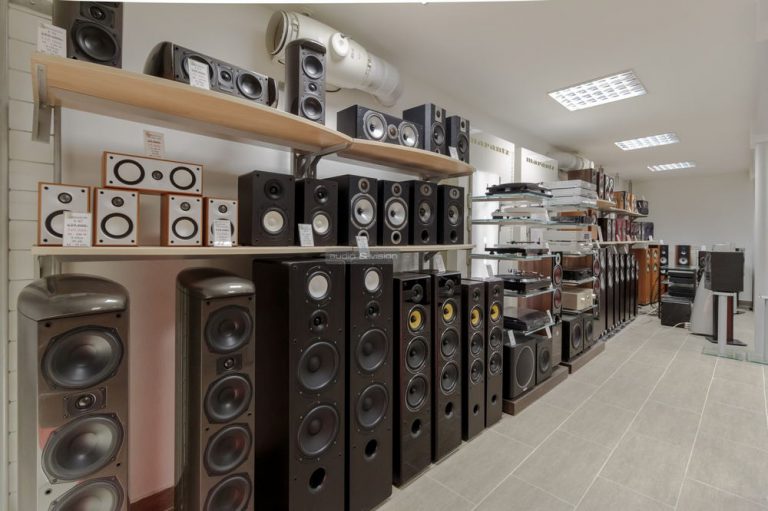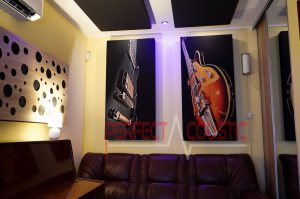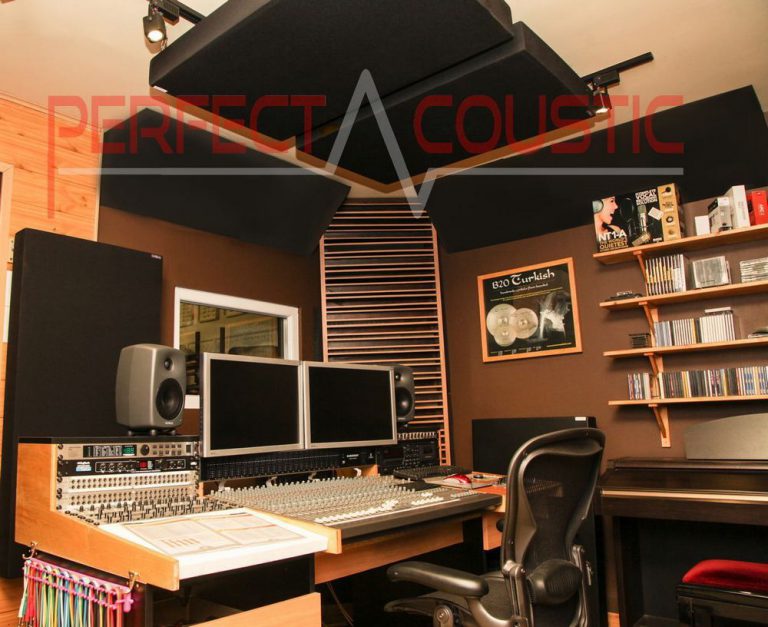First of all, what is over dampening!?
-
Bass acoustic wall panels with double leather membrane83 € – 260 € +Vat
-
Absorption panels with diffuser-Two in one62 € – 296 € +Vat
-
3D acoustic diffuser 70x70x10cm122 € – 139 € +Vat
What are the symptoms of an over-dampened room?
- Significant narrowing of the sense of space.
- The high frequencies die off too quickly.
- Deadening of the middles.
- Cessation of the airiness of the human voice.
- The low frequencies chug and become lifeless.
- The music does not surround you, it sounds only on the front side in one plane and not in 3D.
- The high frequencies may deaden but the bass pushes your ear even more because they haven’t been dampened.
This kind of over-dampening is easy to be identified.
You only have to look at the furniture of a room and maybe check the type and condition of the walls. In most cases, the numerous misinformation leads to the killing of the room.
What are these misconceptions or misdirections of the internet?
One type of this is unintended misdirections, which is the information received from incompetent people or forums. Since people there repeat each other’s false advice the oral tradition has been embedded in public awareness as an obvious truth.
Consider some examples of misconception:
We should put carpets on the wall to take off the bass.
This is one of the worst methods as a carpet cannot “handle” the law frequencies but the more it can handle the higher frequencies. This way we have already over-dampened the frequencies over 1000Hz.
The other terrible solution is a curtain for the whole width or length of the room. With this method, we achieve the same result as with the “carpets on the wall” method.
We should use curtains where there are windows. But if it is possible, we should use them in the size of the window and we must put them only in front of the window to somewhat dampen the reflection of the glass. But contrary to the misconception of the posters – namely you need only a huge thick curtain and a huge carpet and the acoustics is completed – you should use much more and more complex materials.
If you still use carpet do not use it on the whole room area. If it is possible place it only on the surface between the sitting position and the loudspeakers. This way we leave a little surround sound for the room.
The other big problem is wallpaper. Specifically, the thick foam wallpaper, the wool chip, and the spreadable wallpaper. These materials significantly dampen the frequencies above 2000Hz. As we use them for a huge surface – in the whole area of the room – we suppress these sounds thereby.
Sometimes the owner overdoes it and puts too many panels in the room and has no idea what should be placed where.
Consider one example:
I was recently asked by phone to come and see a room of 4x4m designed to be exclusively a hi-fi room which had been treated acoustically but for some reason, it hadn’t sounded as they wanted.
We agreed that I could work only with the materials used by him which was not an easy task.
After the first measurement I received the following result:
It shows the RT60 reverberation time. A room of this size should be approximately between 0,3 and 0,4.
In this room, 25 acoustic panels have been put everywhere except where they should have been put. As we can see the room is already over-dampened above 120Hz. But it is not in balance with the low frequencies. Theoretically, the law frequency may not exceed the high frequencies by 125% because the sound balance will be broken.
Let’s see what we can achieve with 15 acoustic panels applied in the appropriate place. The other panels were taken out of the room.
-
Art diffusers 60x60x6cm129 € – 168 € +Vat
-
Bass sound dampening panels with wood membranes91 € – 268 € +Vat
-
Absorption panels with diffuser-Two in one62 € – 296 € +Vat
Intentional misdirection:
Unfortunately, this type of misdirection causes more damage to the client than any of the above factors since it not only destroys the acoustics but also empties our wallets.
These are for example:
- foam
- Styrofoam
- XPS
- wallpaper and similar material of a few millimeters
and the list goes on.
These products as materials are not suitable for dampening the sound in the entire frequency range or for scattering the sound. Destroying thereby the sound balance of the room. They are suitable for dampening sounds above 600Hz and 1000Hz on average.
They are however very appropriate for that purpose. The only problem is that either the musical sounds or the human voice can go much lower than that range. Consequently, the unevenness of the sound will be lost and they will tend to the low frequencies. However, since he/she wants to dampen mainly the low frequencies he/she achieves exactly the opposite with these products.
Of course, the client is happy after the first listening because if he/she claps the room will not peal as much. The only problem is that clap sounds around 1000Hz.
To dampen low frequencies together with high frequencies, we should use a high specific weight, dense, fibrous material. We must use at least 90kg/m3 absorbing material to absorb fewer high frequencies than middle frequencies.
Why should we do that since also the high frequencies need to be dampened?
We do not have to care about high frequencies because if we start treating the low frequencies the high frequencies will be also involved. Almost everything dampens the high frequencies and it is much easier than to dampen the low frequencies. That is because of the very short sound waves. If we measure an average living room, we can see how the furniture and the objects in the room alone dampen them:
-
Art diffusers 60x60x6cm129 € – 168 € +Vat
-
Corner bass trap with membrane-108x64x23cm135 € – 142 € +Vat
Again, a nice example of a room with foams:
In the next diagram, I will show you the reverberation of a studio filled with foams while the owner claims that the studio has already been treated but the audio content recorded in his room sounds still differently from that in his friend’s studio. I should add that we talk about a cellar surrounded by concrete walls.
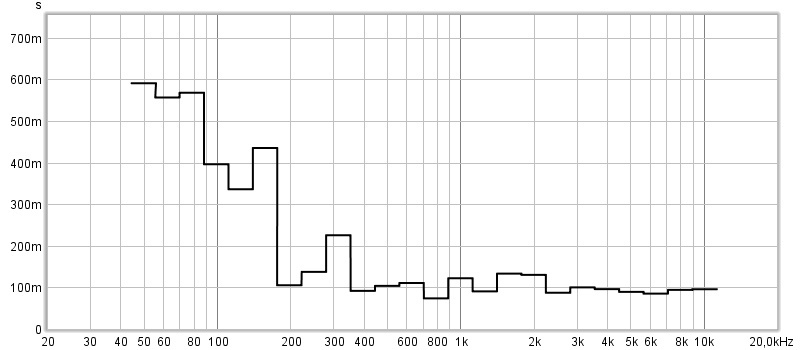
Look at the results we received after the treatment. Of course, the foams were taken off the wall
That was a room of 3mx4,5m.
Unfortunately, we had to use a lot of wood and leather membranes because of the concrete walls but the result speaks for itself.
-
Giga bass panel with membrane94 € – 129 € +Vat
-
What to do if our room is over-dampened?
If for example the walls are made of plasterboard or wood the room is almost over dampened but it still echoes!?
Use diffusers! The diffusers scatter and partially absorb the sounds. It depends also on the use of material.
If there are many soft objects in the room you should use diffusers made of blockboard. These diffusers raise and scatter significantly the high frequencies but also siphon off the bass thanks to the wood.
If you still need acoustic panels and not only diffusers it is worth using leather membrane acoustic panels because these hardly affect the sound above 600Hz but soften the reflections. Their ability to absorb the bass is however significantly higher than that of the classic absorbing acoustic panels.
If you consider having problems only below 150Hz it is advisable to use only a double wood membrane.
The most important thing is to create a linear sound environment.
Thank you for dropping by. SzG

